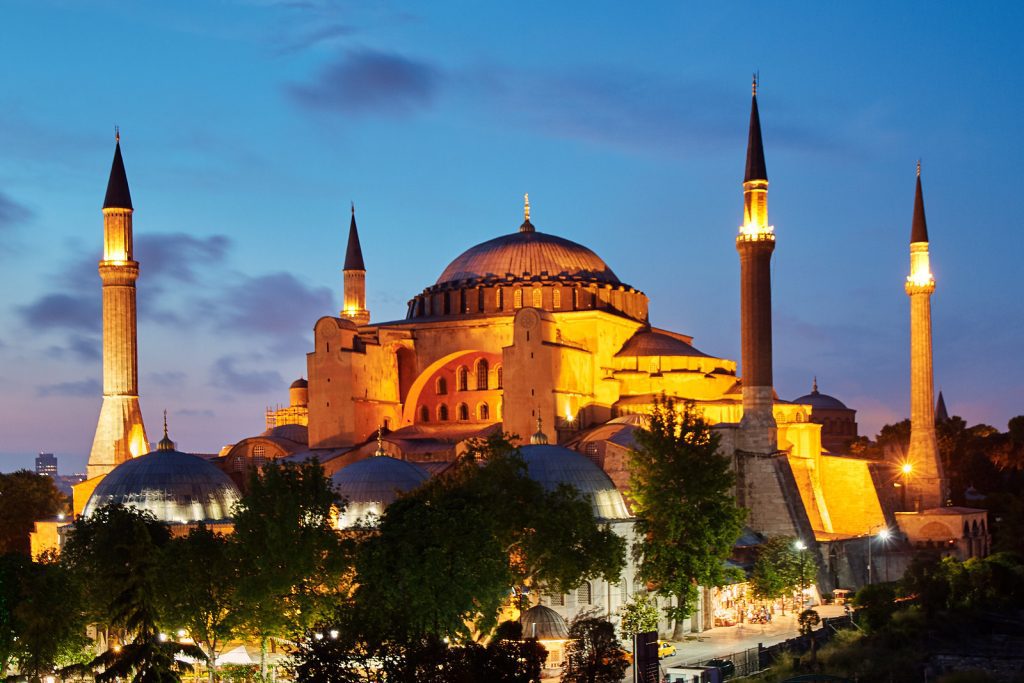If you travel anywhere in Istanbul, Turkey, make a point of checking out the Hagia Sophia, arguably one of the country’s most spectacular landmarks and most important mosques. This Byzantine monument is truly enormous, and it’s been around for more than a millennium and a half. Want to know more? Here are some fun facts about Hagia Sophia before you go see it for yourself.
1. The Hagia Sophia’s been a site of worship for centuries.
Believe it or not, Hagia Sophia was once a church, as ordered by Constantine I. The structure was actually built onto the simple foundations of a Pagan worship site, though it eventually burned down. The basilica we see today is the third in its line.
It was a church for around a millennium before becoming a mosque for a further 500 years as a result of Ottoman invaders. It ceased mosque functions as of 1934.
2. It only took six years to build the current structure.
Weirdly, the third incarnation of Hagia Sophia genuinely took around six years to complete. That’s despite the fact it’s amazingly ornate – and it’s even withstood earthquakes in the region, too. It’s positively unspoiled apart from a replacement dome.
3. Hagia Sophia became a museum.
It’s true! After centuries of religious worship, Mustafa Kemal Atatürk – who was modern Turkey’s first president – declared the building a museum, and worship was actually illegal here until 1991. At this point, Turkey’s government created a prayer pavilion, and in 2013, Muslims were once again allowed to observe calls to prayer from within the building’s minaret.
Therefore, Hagia Sophia is regarded as a mosque once more – and visitors must follow traditional respectful practices if they wish to visit.
4. That’s not its name!
Well, it is, but it’s gone by a few different monikers over the years. It was originally called The Great Church, or Madna Ecclesia, before earning the name Hagia Sophia, Greek for “Holy Wisdom”, in around 430 AD.
Even now, it’s not officially called Hagia Sophia. The Ottoman Empire rebranded it the Ayasofya, and it’s called the Ayasofya Müzesi as of the time of writing.
5. From one wonder to another!
Curiously, we wouldn’t enjoy the Hagia Sophia if it wasn’t for the Temple of Artemis. The abandoned ruins provided columns to help build the structure as we know it – and it’s thought builders borrowed other structural pieces from alternative ruins elsewhere.
6. It has a healing column.
One of the most curious features of the Hagia Sophia is what many refer to as its “healing column.” Sometimes known as the “wishing column” or the “sweating column” (gross, but important all the same), one of the building’s 107 supports is reportedly damp when you touch it. It’s coated mostly in bronze, and many people touch or rub the column for healing or luck.
7. Don’t go knocking here!
Hagia Sophia’s incredibly seven-metre-tall door is known as the Emperor’s Gate. The Emperor once exclusively used this imposing entrance, and it’s embellished with bronze plating and frames. Legend has it that the Gate is built from wood reclaimed from Noah’s Ark!
8. There’s evidence that Vikings visited.
Believe it or not, historians have found evidence that Vikings once visited and left an inscription on marble down in Hagia Sophia’s south gallery. Even stranger, is what the inscription says. Translated, it reads, “Halvdan was here.” Does graffiti ever really change?
FAQs about Hagia Sophia
Are non-Muslims allowed to enter Hagia Sophia?
Yes, however, you should always avoid entering the structure during prayer times. Muslims attend call to prayer here five times each day, with Friday noons being of particular importance. When visiting Hagia Sophia, you must remove your shoes before entering.
What can I wear to visit Hagia Sophia?
It’s important to wear mosque-friendly clothing when visiting Hagia Sophia. That means you should always keep your legs and shoulders covered, remove shoes when entering, and all female visitors should wear headscarves.
How much does it cost to visit Hagia Sophia?
There are no longer specific costs to enter Hagia Sophia, however, you will need to pay fees if you wish to undertake a tour of the building with a guide.
Further reading:
https://facts.uk/tag/Turkey
https://www.hagiasophia.com/
https://muze.gen.tr/muze-detay/ayasofya
Do you know any fun facts about Hagia Sophia? Share them in the comments below!
